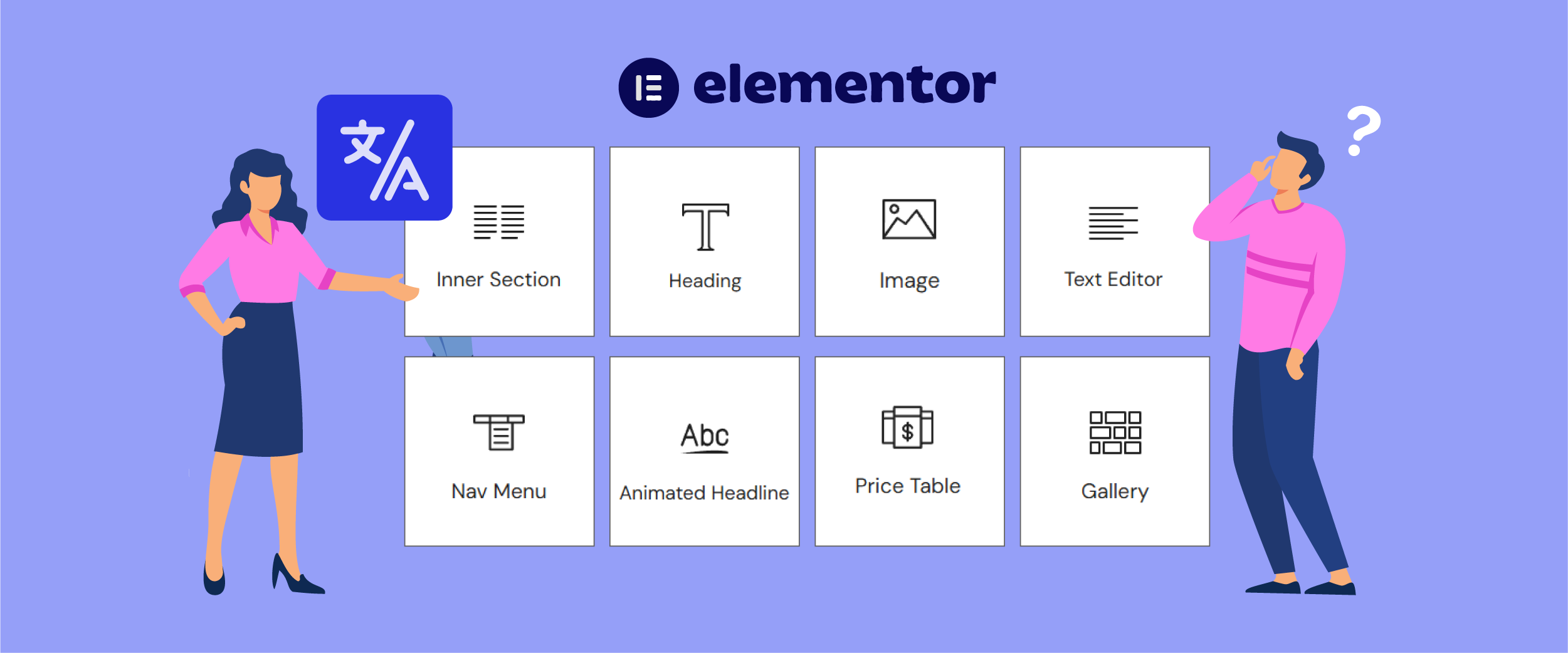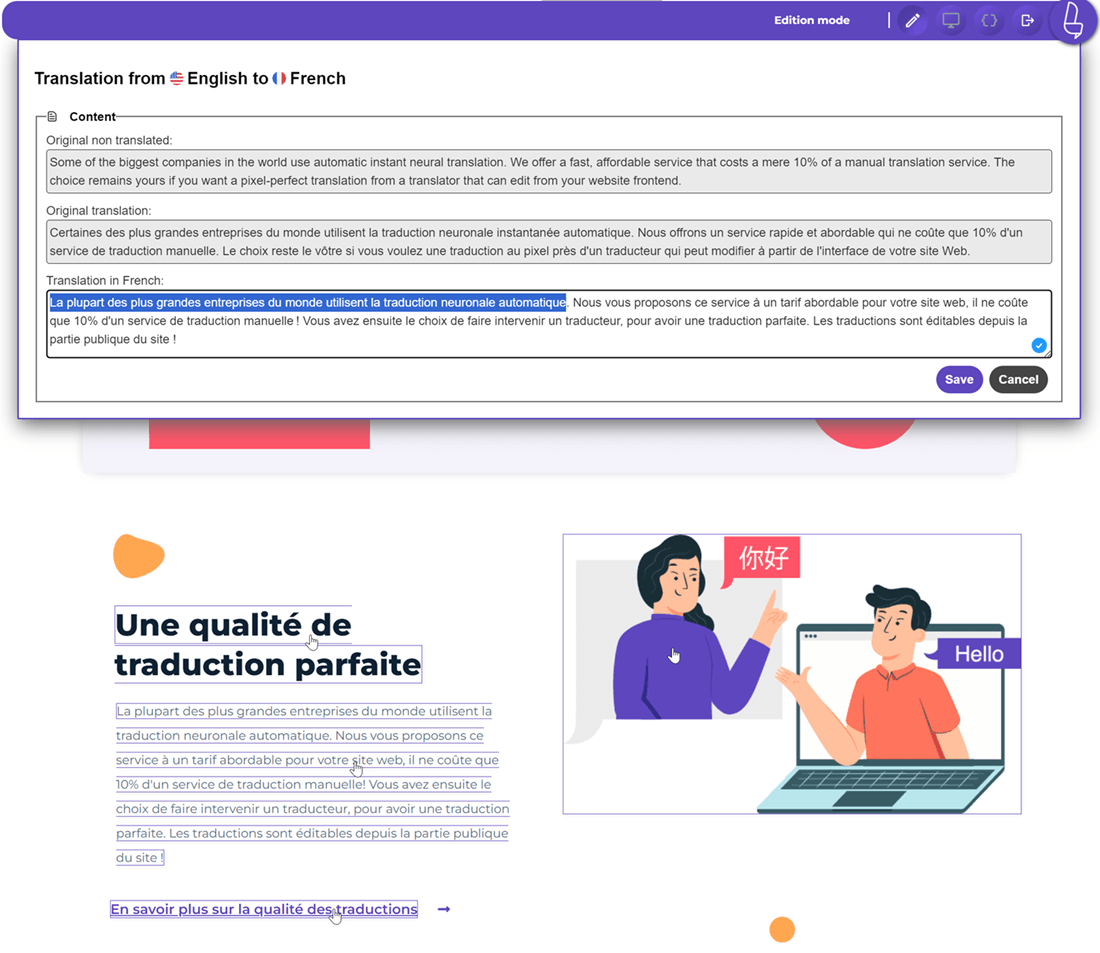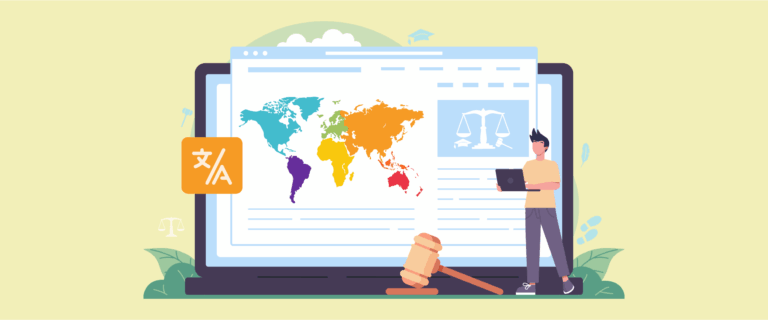Translate Elementor widgets automatically means you can translate every element on your website without doing it individually. This method is much more efficient for a multilingual website because it saves time while keeping the design neat and SEO performance intact.
With an automated solution, visitors’ transition between languages will be seamless, while you retain full control to ensure the translations meet your needs. This article will discuss why widget translation is important, common issues that arise, and practical steps for using a plugin to ensure your multilingual website runs smoothly.
Why widget translation matters for UX & SEO?

Translating widgets in Elementor directly impacts user experience (UX) and how search engines rate your website. Here’s why:
- Improves user experience (UX): Visitors will feel more comfortable seeing content in their language. Well-translated widgets such as buttons, forms, or menus help them understand the site’s functions without confusion.
- Supports design consistency: With automatically translated widgets, the text fits the layout perfectly. This prevents issues such as cut-off text or messy layouts, which can reduce the site’s professionalism.
- Improves SEO visibility: Search engines index content based on language. If widgets are translated, the page’s chances of appearing in international search results are greater.
- Reduces bounce rate: Visitors who don’t understand the site’s language tend to leave immediately. Widget translations keep them on the site longer because navigation feels relevant and easy to follow.
- Supports global brand strategy: Multilingual websites are committed to serving an international audience. This increases trust and brand image in users’ eyes from different countries.
Common problems when translating Elementor widgets

Translating Elementor widgets may sound simple but often causes technical and strategic problems. Here are some of the most common obstacles encountered when translating widgets.
Layout breaks and design issues
One of the main problems is that the layout often breaks after text is translated. For example, English text like “Add to Cart” is usually shorter as shown below.

Meanwhile, in Spanish, the equivalent phrase “Añadir a la Cesta” is much longer. This difference in length can cause buttons to spread out, text to be cut off, or even elements to overlap with images. As a result, the page looks messy and reduces user comfort.

If this issue is not addressed, the design you have carefully created in Elementor may lose consistency in other languages. This not only damages the aesthetics but also reduces visitor trust because the website looks less professional. An automated solution must ensure that each translation adapts properly to the design space without requiring constant manual fixes.
Inconsistent translations across widgets
Language consistency is key to creating a good user experience. If one widget uses the term “Cart” while another widget translates it as “Shopping Cart” or “Trolley,” users may become confused. This small difference may seem trivial, but it can reduce the impression of professionalism and confuse navigation.
This inconsistency often arises when translations are done manually by different people or using automation without a glossary setting. In the long run, inconsistency can damage brand voice and give the impression that the website is not well-managed. Therefore, it is important to use a solution that can maintain consistency of terms across all widgets.
Duplicate content risks for SEO
Another common problem is the risk of duplicate content. If multilingual pages are not managed properly, search engines may consider multiple language versions to be the same content. This can lower SEO rankings because it is considered repeating content without added value.
Without proper configuration, pages in different languages may have the same URL or lack hreflang tags. As a result, Google may be confused about which version of the page to display for a specific audience. To avoid this, the translation system must ensure that the multilingual SEO structure remains consistent, from metadata to URL configuration.
How plugins simplify Elementor widget translation

Managing widget translations in Elementor can get complicated if done manually. Multilingual plugins simplify the process with automation, smart integrations, and features that keep the design intact.
Using multilingual plugins with Elementor
Multilingual plugins let you translate website content, including Elementor widgets, without duplicating or manually rebuilding pages. By enabling additional languages, the system handles synchronization across all elements.
This saves time and gives you control over how translations are applied, whether fully automated, manual, or hybrid. It’s a practical way to maintain quality while ensuring your site is accessible to a global audience.
Integration with machine translation services
One major advantage of multilingual plugins is their ability to connect directly with machine translation services. These services use AI to deliver instant translations, ensuring that even large websites with dynamic content can be localized quickly. This makes it easier to manage multilingual sites without spending endless hours on manual work.
For example, Linguise automatic translation offers real-time translation for hundreds of pages, including Elementor widgets, in just minutes. It not only maintains consistent terminology but also ensures that translations remain SEO-friendly. The process runs automatically, yet you still have the flexibility to edit or fine-tune translations when needed. Best of all, Linguise integrates seamlessly with Elementor and other major platforms, so your translations always work smoothly within your site’s design and functionality.
The result is a multilingual website that feels professional, loads fast, and delivers a smooth experience for global visitors.
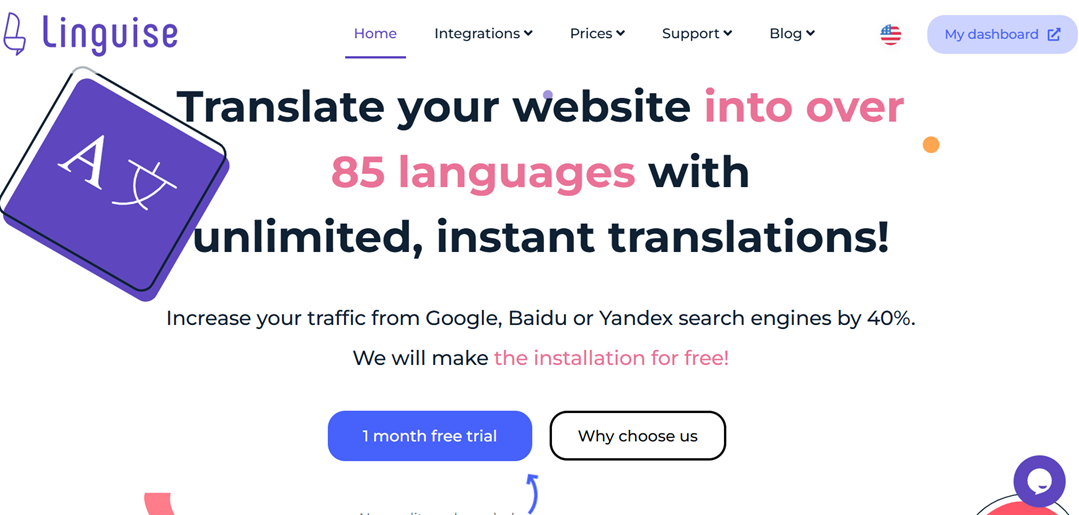
Maintaining layout integrity during translation
One of the toughest challenges in translation is keeping the layout intact when text length varies across languages. Multilingual plugins usually include mechanisms to adjust spacing and alignment so the design stays proportional no matter the language.
This way, your website remains consistent and responsive across all versions. Visitors won’t see stretched buttons or clipped text, because the plugin ensures widgets adapt automatically. The outcome is a smoother, more professional browsing experience.
Step-by-step guidance to automate widget translation
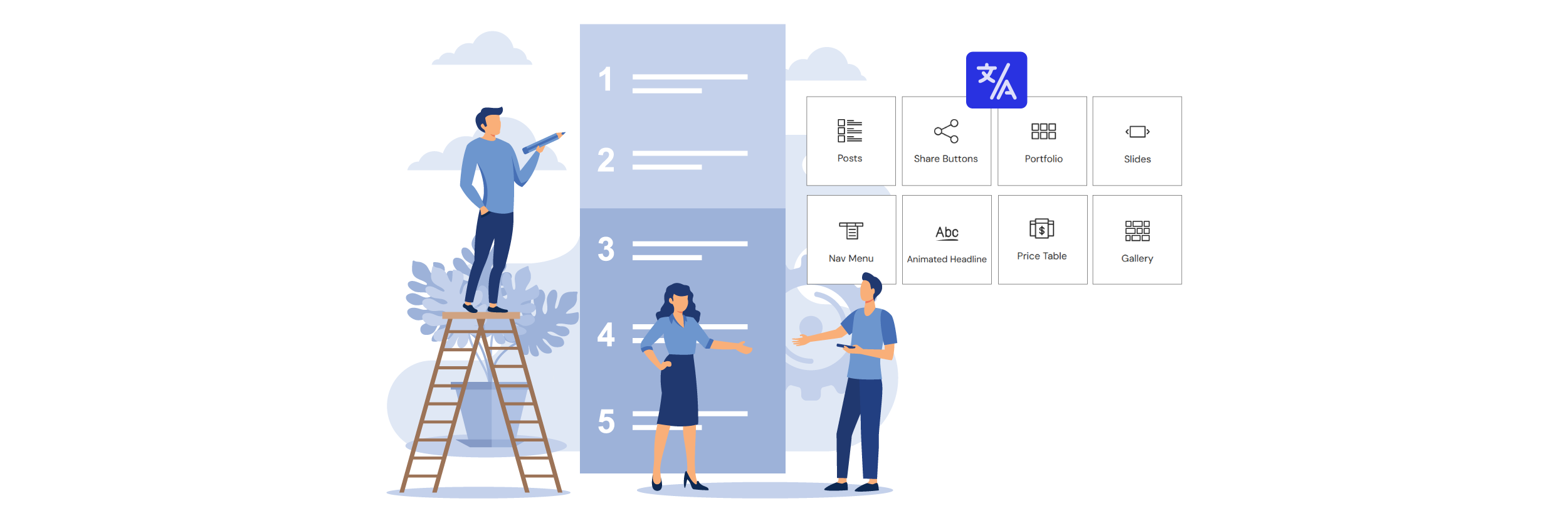
Automating widget translation in Elementor becomes much easier following a structured process. Here’s a practical step-by-step guide to ensure your multilingual site runs smoothly without breaking layouts or hurting SEO.
Step 1: Pick the right multilingual plugin
The first step is choosing a plugin that integrates well with Elementor. Not all translation plugins handle widgets equally, so make sure the one you select supports full widget translation, offers SEO features, and has automatic and manual edit options. This will give you the flexibility to balance speed with accuracy.
Popular options include plugins that connect with machine translation services or offer real-time synchronization. Making the right choice initially sets a solid foundation for a reliable multilingual workflow.
Step 2: Set up automatic translation
Once the plugin is installed, configure its automatic translation settings. This usually involves selecting your target languages, enabling real-time translation, and setting rules for applying translations across the site.
With automation active, new content, including widgets you create in Elementor, is instantly translated. This saves time and ensures your multilingual versions stay up to date without extra work.
If you want to take automation to the next level, tools like Linguise make the process seamless. Linguise offers a cloud-based automatic translation system that connects directly with your Elementor site, so there’s no need for manual duplication of layouts.
It supports over 80 languages with high-quality neural machine translations and includes real-time updates. Plus, Linguise also handles multilingual SEO automatically by translating metadata, slugs, and generating hreflang tags.

Step 3: Translate Elementor widgets
Now it’s time to apply translations directly to Elementor widgets. The plugin should detect widget content such as text blocks, buttons, and forms, and automatically provide translations.
The advantage of automation is that you don’t need to duplicate layouts for every language. Instead, translations are layered on top of the existing design, keeping everything aligned and consistent across languages. In addition, most multilingual plugins also include a live editor feature, allowing you to review and adjust translations directly on the page. This gives you full control to fine-tune wording, context, or tone while keeping the process fast and efficient.
Step 4: Preserve SEO metadata
Multilingual SEO is just as important as the visible content. Ensure your plugin also translates metadata such as titles, descriptions, alt text, and URL slugs. These elements help search engines understand and index your site properly in different languages.
Correct SEO settings prevent duplicate content issues and improve your chances of ranking higher in international searches. Always confirm that hreflang tags are set up so search engines know which page to serve for each language.
Step 5: Review & validate
Even with the best automation, manual review is still essential. Review the translated pages for accuracy, consistency, and design alignment. Look for text that might be too long, cultural nuances that need adjustment, or SEO keywords that should be localized.
Validation ensures your site looks translated and feels natural to your target audience. This final check balances the speed of automation with the quality assurance of human review.
Best practices for seamless design, SEO, and consistency

To get the best results when you translate Elementor widgets automatically, it’s not enough to just rely on automation. You must also follow some best practices that ensure your site looks professional, remains SEO-friendly, and delivers a consistent experience across languages.
Keep layout responsive across languages
One of the biggest challenges in multilingual websites is keeping the design responsive. Text in different languages can expand or shrink, which may push buttons, menus, or widget content out of place. Ensuring that your Elementor layouts are flexible will help prevent these issues. Using relative sizing (like percentages) instead of fixed pixel widths also helps maintain balance across screen sizes and languages.
In addition, always preview your translated pages on mobile, tablet, and desktop. Responsive design testing is key because some languages, such as Japanese or Arabic, can affect alignment or spacing. Taking time to adjust ensures your design stays user-friendly everywhere.
For example, a simple button like “Add to Cart” changes depending on the language Japanese.
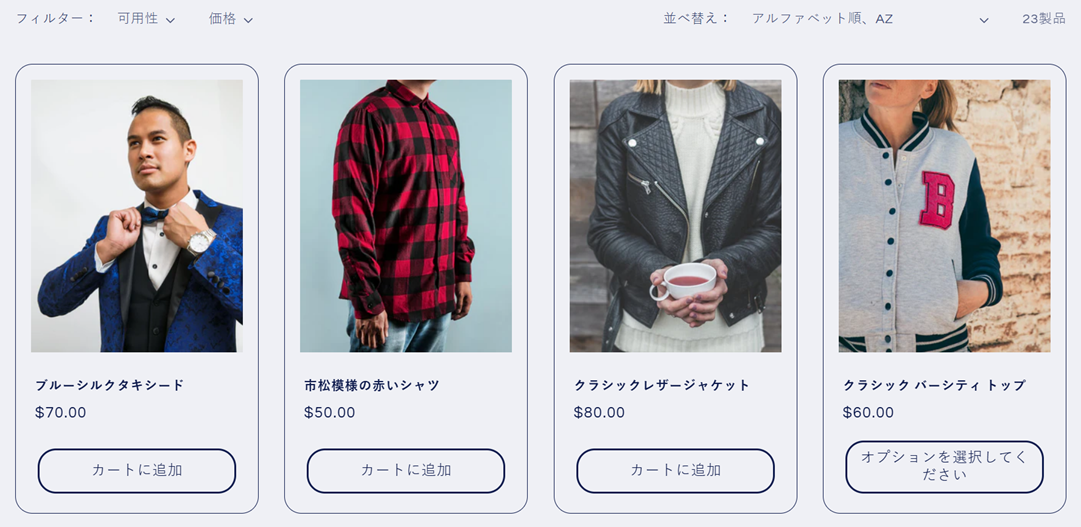
And Arabic.

Both versions are longer than English, and Arabic uses a right-to-left (RTL) layout. These translations could easily stretch the button or break the layout without responsive design and RTL support.
Optimize translated content for SEO
Automatic translations align with SEO goals. Translating titles, meta descriptions, image alt text, and URLs ensures your content is discoverable in every target market. Without these, your site risks poor visibility in search engines, no matter how polished the design.
It’s also important to localize SEO keywords rather than directly translating them. For example, a keyword that works in English may not be what users search for in Spanish or French. Using localized keywords improves your chances of ranking higher and attracting relevant traffic.
Imagine a travel agency website. The English keyword “cheap flights” should be localized to “billetes de avión baratos” for Spanish users. A direct translation might miss the exact phrasing people search for, leading to fewer clicks.
Ensure terminology consistency
Consistency is vital when managing multilingual content. Users may become confused if certain words or phrases are translated differently across widgets or pages. This can also affect brand credibility, as inconsistent messaging feels unprofessional. Using glossaries or terminology databases can help maintain a standard vocabulary.
Plugins like Linguise also support centralized translation memory, meaning once a term is translated, it will be applied consistently across all widgets and pages. This saves time and keeps your messaging uniform in every language.
For instance, an e-learning platform offering courses in multiple languages should translate the term “dashboard” the same way throughout the website. Inconsistent translations, like mixing “control panel” and “dashboard”, can frustrate learners and reduce trust.
Adopt an automated & manual QA approach
Even with advanced automation, human quality assurance (QA) remains necessary. Automated translation saves time and keeps your site scalable, but some phrases may require cultural adaptation or fine-tuning. Balancing automation with manual review ensures both speed and accuracy.
This approach lets you catch issues machines might miss, such as idioms, context-sensitive terms, or brand-specific tones. The key is automating the bulk of translation while performing periodic manual checks for quality and nuance.
Take the example of a tech company website. An automatic translation might render “cloud storage” literally in some languages, which could confuse users. A manual review would correct the industry-standard local term, ensuring clarity and professionalism.
Conclusion
Translating Elementor widgets automatically is the most efficient way to build a multilingual website without sacrificing design or SEO. Using the right tools and best practices, you can avoid layout issues, keep terminology consistent, and ensure your content is optimized for global audiences.
Still, the best results come when automation, SEO, and friendly solutions work together. That’s why a tool like Linguise automatic translation can make a big difference. It delivers instant, high-quality translations across all your Elementor widgets while optimizing your site for international search.

